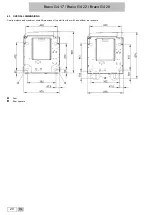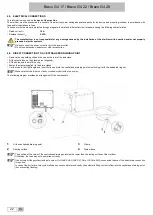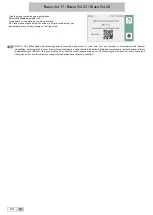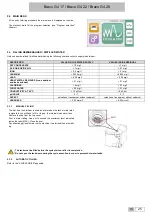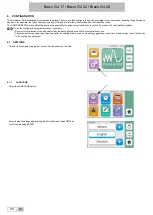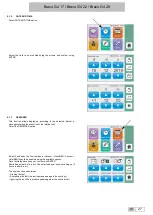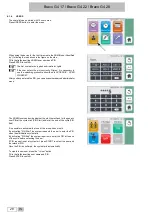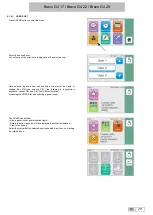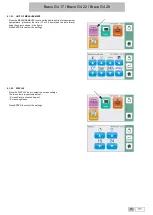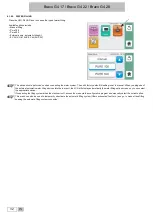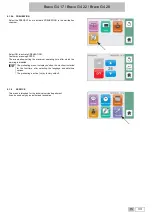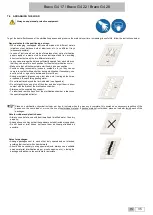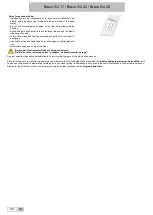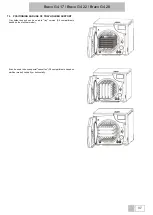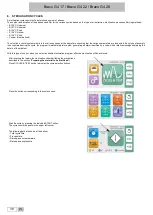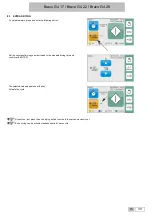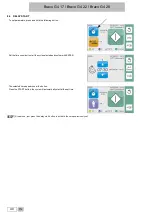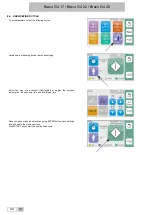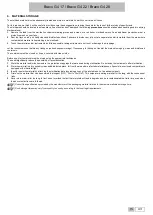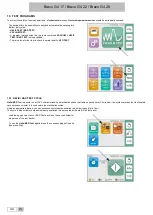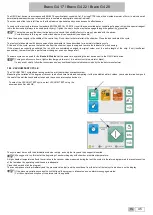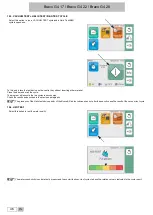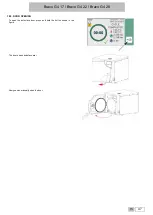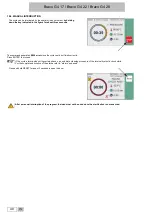
Bravo G4 17 / Bravo G4 22 / Bravo G4 28
34
EN
7. PREPARATION OF THE MATERIAL
Always use personal protective equipment.
Take the following precautions when handling and managing contaminated material:
•
Wear rubber gloves of suitable thickness and the specific protective mask on your face;
•
Clean your gloved hands with a germicide detergent;
•
Always carry the instruments on a tray and never carry them in your hands;
•
Protect your hands from contact with any sharp points or edges; this will avoid the risk of contracting a dangerous infection;
•
Immediately remove any article that does not need to be sterilised or that is not capable of withstanding the process;
•
Carefully wash your still gloved hands when finished handling non-sterile material;
•
All materials and/or instruments to be sterilised must be perfectly clean, without any type of residue (deposits of organic/inorganic material, fragments
of paper, cotton/gauze pads, lime, etc.).
In addition to causing problems during sterilisation, the failure to clean and remove residue can damage the instruments and/or steriliser itself.
7.1. TREATING THE MATERIAL BEFORE STERILISATION
An effective cleaning consists of the following:
1
Separate metal instruments by type of material (carbon steel, stainless steel, brass, aluminium, chromium, etc.), to avoid electrolytic oxidation-
reduction.
Solutions containing phenols or quaternary ammonia compounds can cause corrosion on instruments and on the metal parts of the
ultrasonic device. Follow instrument IFU for effective cleaning.
2
After washing, carefully rinse the instruments and make sure that residues have been completely eliminated; if necessary, repeat the washing cycle.
3
Dry all treated instruments. Drying is fundamental because the presence of water traces on the surface can jeopardise the following sterilisation
process.
The operator must wear suitable PPE and protect the working surface to prevent its contamination by any air-dispersed particles.
To avoid the formation of lime spots, rinse with deionized or demineralised / distilled water, if possible.
For handpieces (turbines, contra-angles, etc), in addition to the above listed procedure, follow the Manufacturer instructions.
At the end of the sterilisation program, remember to lubricate the internal handpiece mechanisms. By taking this precaution, the instrument life
time will not be reduced in any way.
Consult the instructions provided by the manufacturer on the instrument/material to be sterilised before subjecting it to autoclave
treatment, checking for any incompatibilities.
Strictly follow instructions for use of detergents or disinfectants and instructions for use of automatic devices for washing and/or
lubrication.
As regards textile materials (porous), such as lab coats, napkins, caps and other, carefully wash and dry them before treating them in the autoclave.
Do not use detergents with a high content of chlorine and/or phosphates. Do not bleach with chlorine-based products. These substances can
damage the tray supports, trays and any metal instruments that may be present in the sterilisation chamber.

